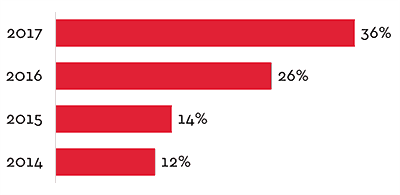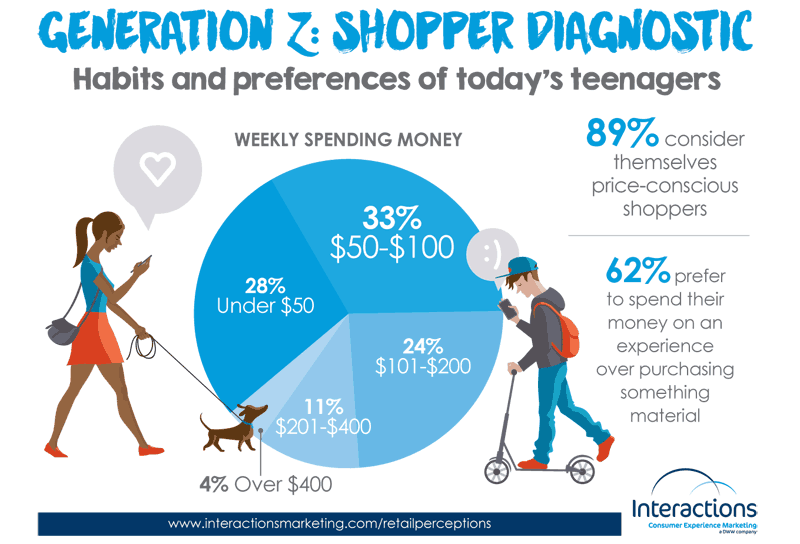Advertising disclosure
Hosting Canada is community-supported. We may earn a commission when you make a purchase through one of our links. Read Disclosure.
Canadian Digital Growth and Industry Trends
There’s no doubt that online commerce is here to stay. One question that many people have is how e-commerce will evolve and what those changes will mean for consumers, business owners, and even services that design and host websites and blogs?
Much of what has taken place in the last few years points toward trends that are likely to continue. Here are some things you should know about the digital growth of e-commerce in Canada and what trends will impact that growth in the years to come.
Internet Commerce Will Continue to Increase
 Even the most pessimistic of prognosticators agree that e-commerce will continue to grow in the years to come.
Even the most pessimistic of prognosticators agree that e-commerce will continue to grow in the years to come.
That’s easily born out by considering what has happened in the last decade. Just about every type of industry one can imagine is represented online now with some sort of option for purchasing goods or services.
The Canadian Internet Registration Authority’s Factbook for 2017 confirms that 82% of Canadian residents made a purchase during the 12-month period under consideration. The range of those purchases included apparel, digital products like books and music files, and even booking flights and other types of travel planning.
Thanks to the ease and convenience of shopping for goods and services online, there is every reason to believe that consumers will continue to seek out products that they’ve purchased online in the past. There’s also a good chance they will begin to look for items they’ve only purchased locally before.
Business owners who have the vision to develop effective marketing campaigns will be able to tap into this growth and make the most of the upward trend.
Expect Apparel and Travel to Continue Dominating Online Purchases
 During 2016, clothing and other forms of apparel like shoes were among the most popular items purchased online.
During 2016, clothing and other forms of apparel like shoes were among the most popular items purchased online.
In fact, 56% of Canadian residents who shopped online purchased some type of apparel.
The next most popular purchases were travel packages or airline reservations, with 55% of online consumers making plans for business or personal travel online rather than going through a local travel agency.
Online services are making it easier than ever to compare pricing for all sorts of clothing and accessories.
Consumers can literally shop at multiple venues using separate tabs and toggle between them.
Combined with the relative ease of zeroing in on exactly what they want without having to browse will likely keep clothing purchases at the top of e-commerce lists.
The same general approach applies to travel arrangements. Along with comparing rates using a series of tabs, the number of sites that make side-by-side comparisons within the same interface continues to expand.
That offers consumers more choices for planning trips without having to consult multiple sources. Companies that ensure their sites make the most of VPS services and the speed they offer are likely to capture and maintain more attention from those who prefer to book travel plans online.
Domestic Companies are Becoming More Attractive
There’s an in-country trend indicating more interest in shopping Canada first. While online shopping with international companies will continue, expect to see more residents seeking out and spending their money at sites operated by Canadian businesses.
During 2016, online shoppers in Canada helped account for 35.2% of total retail sales generated by companies based in Canada. 2017 was an even better year, as the percentage of online sales by Canadian companies jumped to 43.9%.
With more domestic companies forming and developing a presence online, it makes sense that shoppers turn to businesses within the country for their needs. The shopping experience is the same as with international counterparts and there may even be a better chance of finding niche items particular to Canadians.
Small to medium-sized businesses trying to reach this market should compare web hosts that prepare them for the additional (fingers crossed) traffic from the shop Canada first trend.
What Role Will Mobile e-Commerce Play in the Future?
 Historically, the vast majority of online shopping for Canadian residents happened by either desktop or laptop;
Historically, the vast majority of online shopping for Canadian residents happened by either desktop or laptop;
many consumers still prefer one of these two, but tablets are a recent addition growing in popularity. Even Internet-ready televisions that can be used to browse websites and make purchases.
That leaves one final method for online shopping, and it’s a big one – figuratively. We’re talking about the now ubiquitous smartphone.
In the period between 2014 and 2017, shopping via smartphone tripled. A smartphone is far and away the most practical type of Internet-connected device to carry. Canadian shoppers, and most everyone else in the world, are likely to reach for their phones to shop for everything from groceries to hotel reservations.
Will the other devices fade in popularity? Most likely, they will be around for a long time. In particular, shopping with a tablet or through a smart television are likely to become more common, but it’s hard to imagine either supplanting smartphones.
With that in mind, business owners should insure that their web builder of choice provides a mobile responsive version of their website so that it looks good and functions on smaller screens.
Holding the Attention of Younger Consumers Will Be a Challenge
While there are those who believe younger consumers are the ones who utilize online shopping most frequently, that’s not always the case. There are studies that indicate people who are between the ages of 30 and 60 account for a larger portion of e-commerce transactions. As some of those consumers grow older, what does it mean in terms of online shopping growth?
Fortunately, younger consumers are not against the idea of purchasing products online. They just have their own priorities when it comes to shopping. One of the challenges for online business operators is to understand what matters to consumers born around 2000 and later.

Of note is the fact that this demographic is more likely to consider investing in experiences more than accumulating possessions. Expect they are more likely to shop online for clothing needed for a trip, make travel arrangements, and even purchase music to store in a cloud location.
By understanding the emphasis on experience versus buying goods, business owners in specific industries can build future loyalty among this consumer group.
Where Will Bandwidth Come From?
With the increase in overall internet traffic that is anticipated in the coming years, e-commerce companies need to make plans for securing adequate computing resources today. Quality web hosts already provide packages that will hold up during peak periods.
Dedicated hosting, with its speed, security, and better uptime, is likely to become more popular despite the increased cost.
The Bottom Line
There’s an old song that affirms that nothing is quite as sure as change. When it comes to digital growth and the need to anticipate trends and adapt accordingly, that is surely the case. The coming years will likely alter the digital landscape in ways imagined and unforeseen. Those entrepreneurs who react quickly will reap the rewards. Those who don’t, well, we hear they’re hiring at Wal-mart.










